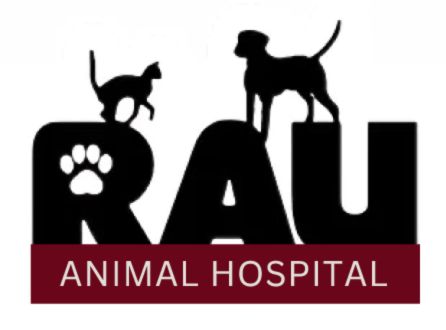Everyone knows Mother’s Day is approaching but did you know there’s a lesser-known holiday that's pawsitively worth celebrating. This Saturday, May 8th, is National Dog Mom’s Day and, while Mother’s Day is known for macaroni art, breakfast in bed, and having other things (hopefully!) done for you, this holiday might have you wondering what you can do for your pup. As veterinarians, we’d like to suggest that you celebrate National Dog Mom’s Day by doing all that you can to give your hound the healthiest and highest quality life possible. From creating a safe environment and providing a healthy diet to teeth cleaning and preventative medicines, your dog has many needs, and it’s your job (well, privilege!) to make sure they’re all met.
Below are 10 tips for becoming the best dog owner you can be, which your dog will thank you for with a long, healthy life bringing joy to you and your family.
1. Keep a Consistent Schedule
Much like humans, dogs are creatures of habit. If you have a puppy, it won’t take long for them to figure out when to expect food, walks, and even when you get home from work. Older dogs have come to expect when certain things will happen, and a deviation from the norm is likely to cause confusion. It’s also a good idea to assign specific responsibilities to family members, not only for the sake of consistency but so your dog also knows who does what for them.
2. Dog Proof Your Home
Dogs are curious creatures and won’t hesitate to bite or chew anything of interest to them. Make electrical cords as inaccessible as possible by pushing them under furniture. Use a dog gate to block off areas of the house that aren’t safe, like your kids’ bedrooms and/or playrooms if they’re young and have small toys. Ensure house plants are elevated beyond your dog’s reach, especially plants that are toxic to pets. Also, ensure that heavy breakables aren’t positioned to topple over if your dog nudges the surface. Keep trash cans covered tightly or block access to them by closing doors. Be sure all food waste is adequately secured, especially hazardous items like corn cobs and BBQ skewers, and foods that are toxic to pets such as grapes, raisins, and chocolate.
3. Be Consistent with Vet Appointments
Many dog owners think that if their dog is acting fine and their vaccinations are up-to-date, they don’t need to see their vet. The reality is that dogs should have regular wellness exams to confirm they’re healthy and check for any signs that their diet, exercise, or medication needs to change. Wellness exams are also important because certain breeds are predisposed to certain genetic conditions. Your vet will keep you educated about warning signs to ensure early treatment is provided if they manifest any symptoms of common diseases. Early diagnosis of any illnesses or disease not only usually offers a better prognosis, but it could also save you a significant amount of money in vet bills trying to battle something that’s already taken hold.
4. Feed Them a Healthy Diet
Your vet can suggest ideal food for your dog’s age, size, and activity level. Be cautious of dog food options that don’t appear natural and have a mile-long list of “ingredients.” Keep their feeding times consistent and always have fresh water available. Treats should be kept to a minimum to avoid weight issues.
5. Give Them Regular Exercise
An active dog is a healthy one, as a dog that exercises is healthy in both mind and body. Take them on walks, bring them to parks, play fetch, and make sure they have a variety of toys to play with when you’re occupied. We know that daily walks are often rushed due to work and other obligations, which is entirely understandable, but try to carve out some time for occasional walks that allow them to sniff, linger, and enjoy their surroundings. These walks are great for both physical and mental stimulation. Inactive dogs are prone to weight issues and sleeping too much during the day. Keep them active, and you’ll add years to their life.
6. Don’t Forget Preventative Medications
Preventative medicines should be administered monthly, and you can discuss what your dog should be taking with your veterinarian.
Several parasites can be prevented with simple monthly topical or oral medications for dogs, such as the following:
- Heartworm disease, which is transmitted by mosquitoes
- Other worms that dogs can get, such as whipworms, tapeworms, roundworms, and hookworms
- Fleas and ticks and the diseases they can transmit
Again, prevention is always easier (and less expensive) than the treatment of disease in your dog.
7. Bathe & Groom Regularly
Look - dogs are prone to being stinky—no bones about it. You’re likely never going to have a pooch that smells like petunias. Still, you don’t want your family dog to develop an unpleasant odor that is overwhelming to you and your guests. Be sure to regularly bathe them with dog shampoo to keep their skin and coat healthy. Oatmeal-based, soap-free shampoos are what we often recommend, but you can ask your veterinarian what’s right for your dog. Or you can choose to send them to a groomer for a bath, haircut, and nail trim. Some dogs need to have their anal glands expressed too.
Your dog also needs regular brushing, with short-coated breeds needing it only weekly and long-coated breeds needing it daily to avoid knots and matting. Regular brushing will also lessen the chance of excess hair falling off into your home.
8. Keep Those Teeth Clean
Dental hygiene is as essential for dogs as it is for humans. Their teeth should be cleaned regularly to avoid tooth and gum disease. Daily brushing is ideal but can be unrealistic for many owners. Have your goal be three times a week using an enzyme toothpaste just for dogs and a soft-bristle toothbrush. Your veterinarian may also recommend regular anesthetic dental cleanings. Chews specifically designed for oral health can also help combat dental issues.
9. Pay Attention to Changes
As your dog ages, you’re likely to notice subtle changes in their routine, habits, eating, playfulness, and more. Those are normal adjustments to be expected, but keep an eye out for more significant changes. Aging is not a disease in and of itself, so you can’t always chalk things up to them getting into their senior years. A loss of appetite, too much sleeping, inconsistent bowel habits, and signs of pain could an indication of problems beyond the aging process. Contact your veterinarian if you notice any of these signs that your aging dog could be sick or in pain.
10. Keep Them Safe
Dogs like to explore, can run off in pursuit of a squirrel, and perhaps scariest – they can be stolen. Make sure your pet has an ID tag with contact information, and consider microchipping your dog in the event they are lost without their collar and ID tag. Microchips permanently identify your dog and can be invaluable in bringing your lost dog home. Approximately the size of an uncooked grain of rice, these tiny chips are simply scanned by a vet or shelter to identify their owner.
Happy National Dog Mom’s Day! Follow these 10 tips, and your dog will be basking in their best life, and you can rest assured they are poised to live a long and healthy one with you. Whether you have macaroni art or breakfast in bed coming your way, we wish you a wonderful life with your faithful friend!
If you have any questions about how to get your dog on the path to optimal wellness, give us a call!

